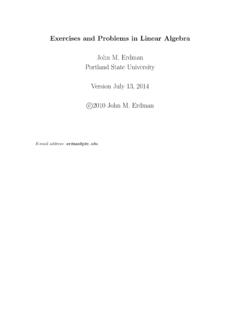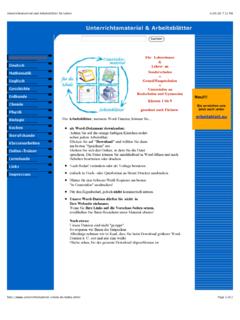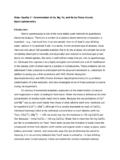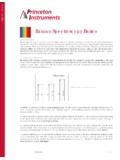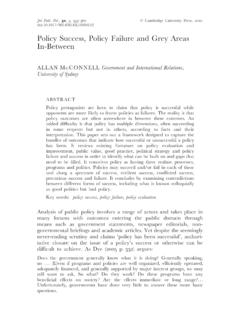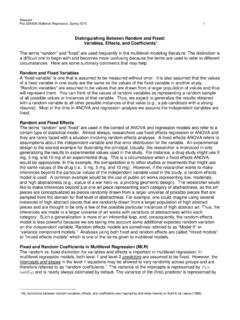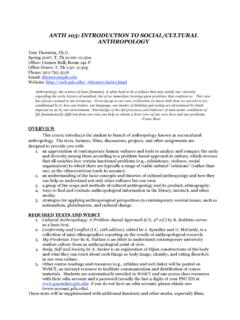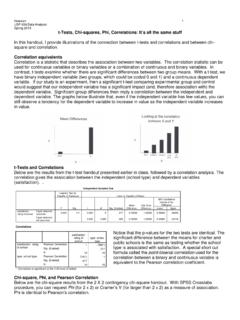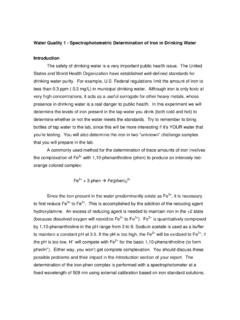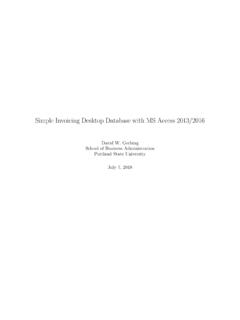Transcription of A ProblemText in Advanced Calculus
1 A ProblemText in Advanced CalculusJohn M. ErdmanPortland State UniversityVersion July 1, 2014E-mail ArgentinaContentsPREFACExiFOR STUDENTS: HOW TO USE THIS PROBLEMTEXTxvChapter 1. DISTANCE AND INTERIOR OF A SET2 chapter 2. TOPOLOGY OF THE REAL OPEN SUBSETS CLOSED SUBSETS OFR7 chapter 3. CONTINUOUS FUNCTIONS CONTINUITY AS A LOCAL CONTINUITY AS A GLOBAL FUNCTIONS DEFINED ON SUBSETS OFR13 chapter 4. SEQUENCES OF REAL CONVERGENCE OF ALGEBRAIC COMBINATIONS OF SUFFICIENT CONDITION FOR SUBSEQUENCES23 chapter 5. CONNECTEDNESS AND THE INTERMEDIATE VALUE CONNECTED SUBSETS CONTINUOUS IMAGES OF CONNECTED HOMEOMORPHISMS30 chapter 6. COMPACTNESS AND THE EXTREME VALUE EXAMPLES OF COMPACT SUBSETS THE EXTREME VALUE THEOREM36 chapter 7.
2 LIMITS OF REAL VALUED CONTINUITY AND LIMITS40 chapter 8. DIFFERENTIATION OF REAL VALUED THE LINEAR DIFFERENTIABILITY47 chapter 9. METRIC STRONGLY EQUIVALENT METRICS55 chapter 10. INTERIORS, CLOSURES, AND DEFINITIONS AND INTERIOR ACCUMULATION POINTS AND CLOSURES58 chapter 11. THE TOPOLOGY OF METRIC OPEN AND CLOSED THE RELATIVE TOPOLOGY63 chapter 12. SEQUENCES IN METRIC CONVERGENCE OF SEQUENTIAL CHARACTERIZATIONS OF TOPOLOGICAL PRODUCTS OF METRIC SPACES66 chapter 13. UNIFORM THE UNIFORM METRIC ON THE SPACE OF BOUNDED POINTWISE CONVERGENCE70 chapter 14. MORE ON CONTINUITY AND CONTINUOUS MAPS INTO AND FROM LIMITS79 chapter 15. COMPACT METRIC DEFINITION AND ELEMENTARY THE EXTREME VALUE DINI S THEOREM85 chapter 16.
3 SEQUENTIAL CHARACTERIZATION OF SEQUENTIAL CONDITIONS EQUIVALENT TO PRODUCTS OF COMPACT THE HEINE-BOREL THEOREM90 chapter 17. CONNECTED ARCWISE CONNECTED SPACES94 chapter 18. COMPLETE CAUCHY COMPLETENESS VS. COMPACTNESS98 chapter 19. APPLICATIONS OF A FIXED POINT THE CONTRACTIVE MAPPING APPLICATION TO INTEGRAL EQUATIONS105 chapter 20. VECTOR DEFINITIONS AND LINEAR CONVEX COMBINATIONS112 chapter 21. LINEAR THE ALGEBRA OF LINEAR MATRIX REPRESENTATIONS OF LINEAR TRANSFORMATIONS125 chapter 22. NORMS ON LINEAR NORMS INDUCE THE SPACEB(S,V)134 chapter 23. CONTINUITY AND BOUNDED LINEAR THE STONE-WEIERSTRASS BANACH DUAL SPACES AND ADJOINTS144 chapter 24.
4 THE CAUCHY UNIFORM THE INTEGRAL OF STEP THE CAUCHY INTEGRAL150 chapter 25. DIFFERENTIAL DIFFERENTIATION OF DIRECTIONAL FUNCTIONS MAPPING INTO PRODUCT SPACES166 chapter 26. PARTIAL DERIVATIVES AND ITERATED THE MEAN VALUE THEOREM(S) PARTIAL ITERATED INTEGRALS177 chapter 27. COMPUTATIONS INNER THE THE JACOBIAN THE CHAIN RULE188 chapter 28. INFINITE CONVERGENCE OF SERIES OF POSITIVE ABSOLUTE POWER SERIES202 chapter 29. THE IMPLICIT FUNCTION THE INVERSE FUNCTION THE IMPLICIT FUNCTION THEOREM213 Appendix A. QUANTIFIERS219 Appendix B. SETS221viiiCONTENTSA ppendix C. SPECIAL SUBSETS OFR225 Appendix D. LOGICAL DISJUNCTION AND RESTRICTED NEGATION230 Appendix E.
5 WRITING PROVING CHECKLIST FOR WRITING FRAKTUR AND GREEK ALPHABETS236 Appendix F. SET COMPLEMENTS240 Appendix G. THE FIELD UNIQUENESS OF UNIQUENESS OF ANOTHER CONSEQUENCE OF UNIQUENESS245 Appendix H. ORDER PROPERTIES OFR247 Appendix I. NATURAL NUMBERS AND MATHEMATICAL INDUCTION249 Appendix J. LEAST UPPER BOUNDS AND GREATEST LOWER UPPER AND LOWER LEAST UPPER AND GREATEST LOWER THE LEAST UPPER BOUND AXIOM THE ARCHIMEDEAN PROPERTY256 Appendix K. PRODUCTS, RELATIONS, AND CARTESIAN FUNCTIONS260 Appendix L. PROPERTIES OF IMAGES AND INVERSE COMPOSITION OF The IDENTITY RESTRICTIONS AND EXTENSIONS265 Appendix M. FUNCTIONS WHICH HAVE INJECTIONS, SURJECTIONS, AND INVERSE FUNCTIONS269 Appendix N.
6 PRODUCTS271 Appendix O. FINITE AND INFINITE SETS273 Appendix P. COUNTABLE AND UNCOUNTABLE SETS277 Appendix Q. SOLUTIONS TO Exercises in chapter Exercises in chapter Exercises in chapter Exercises in chapter Exercises in chapter Exercises in chapter Exercises in chapter Exercises in chapter Exercises in chapter Exercises in chapter Exercises in chapter Exercises in chapter Exercises in chapter Exercises in chapter Exercises in chapter Exercises in chapter Exercises in chapter Exercises in chapter Exercises in chapter Exercises in chapter Exercises in chapter Exercises in chapter Exercises in chapter Exercises in chapter Exercises in chapter Exercises in chapter Exercises in chapter Exercises in chapter Exercises in chapter Exercises in appendix
7 Exercises in appendix Exercises in appendix Exercises in appendix Exercises in appendix Exercises in appendix Exercises in appendix Exercises in appendix Exercises in appendix Exercises in appendix Exercises in appendix Exercises in appendix P348 Bibliography351 Index353 PREFACEIn American universities two distinct types of courses are often called Advanced Calculus : one,largely for engineers, emphasizes Advanced computational techniques in Calculus ; the other, a more theoretical course, usually taken by majors in mathematics and physical sciences (and often calledelementary analysisorintermediate analysis), concentrates on conceptual development and a book of the latter type. It is not a place to look for post- Calculus materialon Fourier series, Laplace transforms, and the like.
8 It is intended for students of mathematics andothers who have completed (or nearly completed) a standard introductory Calculus sequence andwho wish to understand where all those rules and formulas come Advanced Calculus texts contain more topics than thisProblemText. When students areencouraged to develop much of the subject matter for themselves, it is not possible to cover material at the same breathtaking pace that can be achieved by a truly determined lecturer. But,while no attempt has been made to make the book encyclopedic, I do think it nevertheless providesan integrated overview of Calculus and, for those who continue, a solid foundation for a first yeargraduate course in Real the title of the present document, ProblemText in Advanced Calculus , is intended to suggest,it is as much an extended problem set as a textbook .
9 The proofs of most of the major results areeitherexercisesorproblems. The distinction here is that solutions toexercisesare written out ina separate chapter in the ProblemText while solutions toproblemsare not given. I hope that thisarrangement will provide flexibility for instructors who wish to use it as a text. For those who prefera (modified) Moore-style development, where students work out and present most of the material,there is a quite large collection of problems for them to hone their skills on. For instructors whoprefer a lecture format, it should be easy to base a coherent series of lectures on the presentationof solutions to thoughtfully chosen have tried to make theProblemText(in a rather highly qualified sense discussed below) self-contained . In it we investigate how the edifice of Calculus can be grounded in a carefullydeveloped substrata of sets, logic, and numbers.
10 Will it be a complete or totally rigorous development of the subject? Absolutely not. I am not aware of any serious enthusiasm amongmathematicians I know for requiring rigorous courses inMathematical LogicandAxiomatic SetTheoryas prerequisites for a first introduction to analysis. In the use of the tools from set theoryand formal logic there are many topics that because of their complexity and depth are cheated,or not even mentioned. (For example, though used often, theaxiom of choiceis mentioned onlyonce.) Even everyday topics such as arithmetic, see appendix G, are not developed in any embarking on the main ideas of Calculus proper oneideallyshould have a good back-ground in all sorts of things: quantifiers, logical connectives, set operations, writing proofs, thearithmetic and order properties of the real numbers, mathematical induction, least upper bounds,functions, composition of functions, images and inverse images of sets under functions, finite andinfinite sets, countable and uncountable sets.
